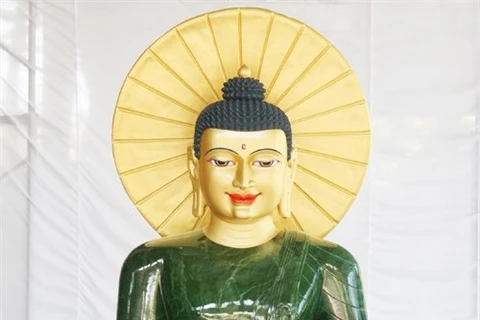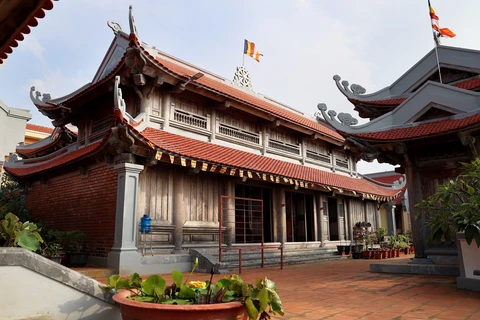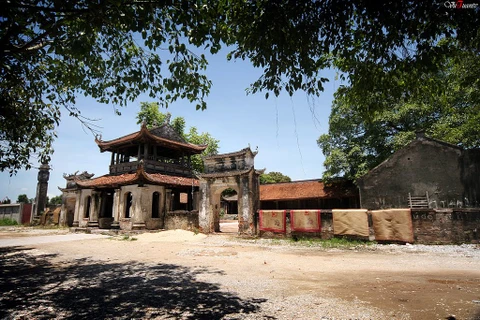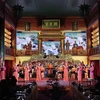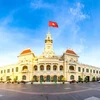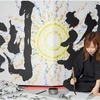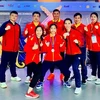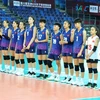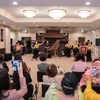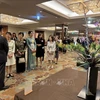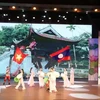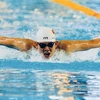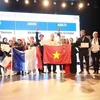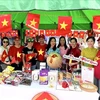
Hanoi (VNA) – Dau pagoda is a famous historical site in Hanoi’s outlying district of Thuong Tin, which houses the embalmed bodies of two monks, Vu Khac Truong and Vu Khac Minh.
Situated on a hill in the middle of the field at Gia Phuc village in Thuong Tin district’s Nguyen Trai commune, the pagoda is covered with luxuriant trees and surrounded with lakes and the Nhue River flowing behind, forming a picturesque landscape.
The pagoda has the Sino-Vietnamese name of Thanh Dao or Phap Tu Vu, but it’s also known as Chua Vua, Chua Ba and Chua Dau.
The pagoda was the object of great care in the feudal dynasties of Vietnam, and has been repaired and upgraded many times. The stele, erected in the year Duong Hoa 5th (1639) of Le Than Tong and preserved in the pagoda reports that the Dau pagoda was constructed under the Ly Dynasty, repaired and enlarged under the Tran, Le and Mac Dynasties.

After passing through the entrance gate and the paved yard, there are two dragons at the side of the steps leading to the veranda of the vestibule. The large-headed dragons are round-bodied, with undulations, a pearl held in the jaws, the forefeet sustaining the chin, the crest directed upward with decorations of flames. The horns directed from behind form a square frame on the head.
At the sight of these dragons, the researchers assert that these are masterpieces of artists under the Tran Dynasty. The pagoda has preserved many ancient steles, bricks decorated with dragons, carps transformed into dragons, and lotus, among others, carrying characteristics of the art of the Mac dynasty.

The pagoda is famous near and far for its two fleshly statues (burial statues) of two Zen masters Vu Khac Tuong and Vu Khac Minh (two monks who lived at the pagoda in the 17th century).
Bodhisattva's physical body, also known as the whole body of relics, is when the master passed away in a meditating position. After hundreds of years the bodies are still intact, have a pure appearance, with the faces completely bearing the features of Bodhisattva.
These are two of four rare corpse statues in the country and in the world, carrying great significance of the mysterious mummification phenomenon of Vietnamese Zen masters.
To embalm a body, according to modern science, it is necessary to fulfill strict conditions, including the use of embalming drugs, internal organs, and brain removal. The body must be kept in a closed space such as a coffin to prevent air from entering the body.
However, with the remains of two Zen masters Vu Khac Minh and Vu Khac Truong, scientists examined by X-ray and found that the two monks had no incisions, and their bodies were completely intact. There was no sign of intestinal and brain suction. The bones were in the correct anatomical position, without any materials such as adhesives, wires, or brackets to support the bones.
It is inexplicable how natural decay has not set in, and has had no impact on the physical bodies of the two masters even after more than 400 years.
Currently, the two flesh statues are placed in a sealed glass altar, pumped with concentrated nitrogen gas for preservation at the pagoda.
Until now, scientists have not yet found the answer as to why the bodies of the two monks were in this perfect state without the use of any type of embalming agent.
With spiritual and scientific mysteries, the pagoda not only contains cultural and historical value, but it also attracts tens of thousands of domestic and international Buddhism followers to visit and worship relics of the two Zen masters each year./.
